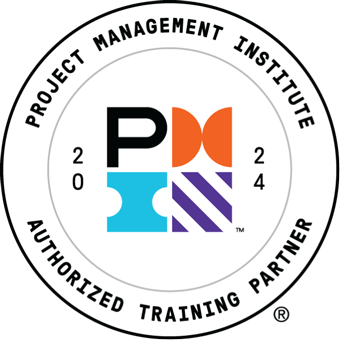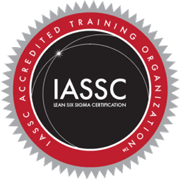Features
Premium video tutorials
Award-winning instructors
Personalized learning
Get certified
Learn at your own pace
Mobile (learn on-the-go)
Unlimited tests and quizzes
Regularly updated content
Overview
This course is part of our Lean Six Sigma Black Belt program, which consists of eight courses designed to prepare you for the International Association of Six Sigma Certification (IASSC) Black Belt exam. We recommend you take all eight courses in the program to be fully prepared for the exam.
What you will learn
In this Design of Experiments online course, you will learn the Design of Experiments or DOE. This design technique, which can be applied in several different methods, takes the results from a few carefully designed experiments and uses those results to create equations that explain how the product, process or system works.
By the end of the course, you will know what the keys to a successful DOE analysis are, and you will be able to conduct a Full Factorial DOE and a Fractional Factorial DOE. If you are a member or leader of an analysis team using a methodology such as Lean Six Sigma, this technique will be a significant aid when your problem resolution requires a major change to your systems.
In addition to covering experimental design approaches and methodologies, you will learn to use popular statistical analysis application Minitab to conduct your DOE and apply your results.
The design of experiments technique is incredibly powerful when working with new products, new technologies, or when migrating an existing technology into a new application. It is also very helpful for identifying the critical few parameters that will drive the performance of the product, process, or system. When you are in a discovery mode of analysis, this technique provides a path to important insights.
Who this Design of Experiments online course is for
This course can be taken as part of the GoSkills Lean Six Sigma Black Belt training program, to prepare for certification with IASSC. It is also a good stand-alone course to improve proficiency and expand your skill set in any industry with responsibility for technology deployment or product and process development.
This course will be from the standpoint of helping you to make wise decisions about your product and process design and management, not conducting mathematical proofs or solving complex matrix mathematics.
Highlights:
- 24 practical tutorials with videos, reference guides, exercises and quizzes.
- Designed to prepare you in part for the IASSC Black Belt exam. To prepare in full, you should take all eight courses in our Lean Six Sigma Black Belt program.
- Identify when and why to do a DoE, and recognize the steps of the process.
- Understand the difference between the full factorial approach and fractional factorial approaches, and their pros and cons.
- Recognize when to use a Plackett-Burman and Taguchi DoE and how to design these types of study.
- Learn how to conduct DoE analysis in popular statistical analysis program, Minitab.
- Understand how design and problem solving teams can apply DOE results to make wise decisions.
- Master the key principles for success when conducting a DOE study.
- Gain critical skills for your role in technology deployment, product and process development, or Lean Six Sigma team.
- Earn 7 PDUs or contact hours toward your Project Management education for certification with PMI.
Once enrolled, our friendly support team and tutors are here to help with any course related inquiries.

- 720p
- 540p
- 360p
- 0.50x
- 0.75x
- 1.00x
- 1.25x
- 1.50x
- 1.75x
- 2.00x
Summary
Syllabus
Experimental Design Approaches Free Lesson
1
Experiments and Design
2
Trial and Error
3
One Factor At A Time
4
Full Factorial Design of Experiments
5
Fractional Factorial Design of Experiments
6
Theory of Design of Experiments
7
DOE Studies
Full Factorial Design of Experiments
1
Full Factorial DOE Methodology
2
Factor Selection
3
Full Factorial DOE Study Design
4
Conducting the Study
5
DOE Functional Equation
The statistical analysis of the full factorial DOE results in the determination of the coefficients for a design space equation that relates all the control factors to the response factors. This equation includes interaction effects between control factors. This equation can then be used by designers to solve for the best overall system performance.
6
DOE in Minitab
Minitab is the statistical analysis software application that is most often used with Lean Six Sigma projects. Minitab has a Wizard that guides you through the setup and design of a Design of Experiments study. This lesson demonstrates how to use that Wizard.
Fractional Factorial Design of Experiments Free Lesson
1
Fractional Factorial Pros and Cons
2
Fractional Factorial DOE Methodology
3
Confounding Effects
4
Factor Selection
5
Plackett-Burman DOE
6
Taguchi DOE
Applying DOE Results
1
DOE Analysis in Minitab
2
DOE Factorial Plots
One of the most common techniques for analyzing the results of a DOE study in Minitab is to review the factor plots. These will provide insight into the optimal settings for control factors. The interactive plots will also highlight the settings associated with local maximum or minimum performance levels.
3
DOE in Design Creation
The DOE results can be used by design teams to make wise design decisions. This lesson will address how to use the DOE results in predicting system performance, designing system controls and establishing tolerances on system control and response factors.
4
Path of Steepest Ascent/Descent
Some DOE analyses will indicate that the optimal performance of the system would occur when control factors are set beyond the bounds of the study. When this occurs, it is best to shift the study to the likely region of optimal performance and then determine the best control factor settings. Following the path of steepest ascent or descent will ensure that the new analysis is conducted in a region with maximum or minimum performance.
5
DOE in Design Optimization
6
DOE in Problem Solving
7
DOE Keys to Success
This final lesson reviews the key principles that must be followed when conducting a DOE study. It highlights the benefit of each and the dangers if the principle is not properly applied.






